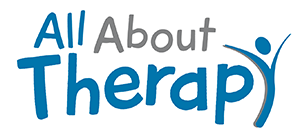Have you been told by your child’s therapist that they are working on his sense of proprioception? Sometimes this term is thrown around by therapists and many parents aren’t sure what it means.
A simple explanation of the sense of proprioception is the body’s ability to sense itself and where it is in space. This sense involves the entire nervous system and is guided by nerves and receptors throughout the skin, muscles, and joints. Vision is not a factor in proprioception – it’s not about being able to see where each body part is and what it’s doing. For example, could you hold a tennis ball securely while blindfolded? Are you able to drive your car well without watching your right foot hit the gas and brake pedals? Most likely you are, and your sense of proprioception enables you to know what your body is doing without actually seeing it.
There are so many real life activities that are affected by the sense of proprioception. Playing a piano or other instrument, typing, walking up and down stairs are examples. If your child has proprioceptive dysfunction, does that mean he will not be able to do these things well? The answer is most likely no. We know that athletes can lose their sense of proprioception in an injured limb, but the sense of proprioception can be re-activated in these athletes through Physical or Occupational Therapy. In children with disabilities, the sense of proprioception can also be activated and regulated by a consistent program of Occupational Therapy.
Symptoms
Some symptoms of proprioceptive dysfunction include:
- Poor Posture/Slouching/slumping over at desk
- Banging things too hard/slamming doors and cabinets
- Using too much pressure for writing
- Plays with toys/friends/animals too hard/tends to break toys
- Bumps into people and walls, especially in hallways
- Likes tight clothes/bear hugs
Keep in mind that none of these symptoms is intentional. No one wants to bang things, hurt his friends and pets, bump into walls, etc. However, these symptoms can really interfere with normal functioning, especially in school. Treatment is important.
Treatment
Therapy for proprioceptive dysfunction is usually prescribed by an Occupational Therapist. Therapy can include the following:
- Sensory Diet
- Heavy work
- Balancing exercises
- Jumping on one foot or both
- Brushing therapy
These activities give a lot of input to the nerves and receptors in the muscles, joints, and skin. This in turn helps the nervous system to re-organize in the proper way. In time and with regular practice, your child will achieve a more typical sense of proprioception.
If you have any questions about proprioceptive dysfunction or Occupational Therapy, please call our offices at 919-448-6018. At All About Therapy, we love to serve our kids and families to achieve positive outcomes!
